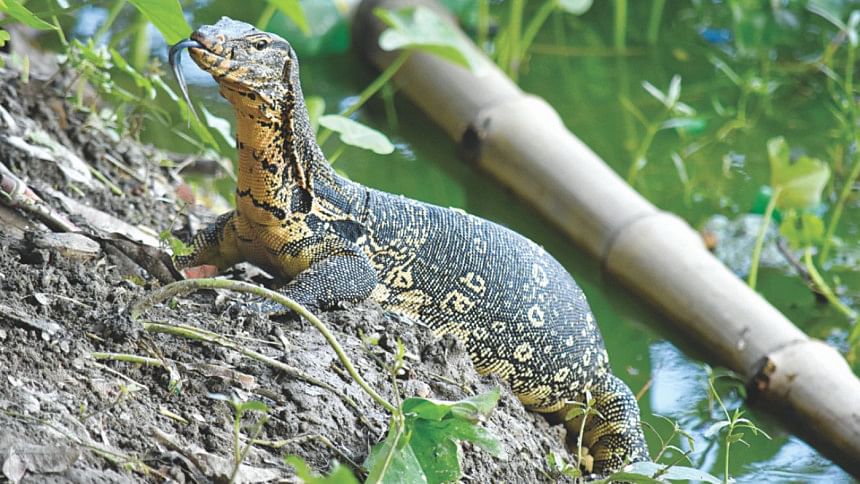Water Monitor: Struggling to survive

Keeping its head above the water, a water monitor, locally known as gui shap, swam to the bank of Khashnagar Dighi (lake) near the Folk Art and Crafts Museum in Narayanganj's Sonargaon one fine February afternoon.
As it reached the bank of the lake, the nearly-five-feet-long black animal with yellow spots all over its body started searching for food in a bush. And it found one in a jiffy with its long forked tongue.
Though water monitors can still be seen roaming in the area, their numbers are fast dwindling.
Sonargaon, once known for being the administrative and commercial hub in the then Bengal, was a safe habitat for a good number of water monitors.
“A number of gui shaps with yellow spots on its body can be found in our area. But their number is decreasing,” said Hafiz Uddin, 51, a local of Sonargaon.
He is a fish trader and has a good knowledge about the species.
Contacted, M Farid Ahsan, professor of the department of zoology at Chittagong University, said although different species of water monitors are seen all over the country, their number is on the slide day by day.
Widespread development work, with no concern for the preservation of biodiversity, was one of the main reasons behind the destruction of water monitors' habitat, which ultimately resulted in a decrease in its numbers, said the wildlife expert.
Besides, he said, hunting for consumption by the locals in hill districts and poaching for skin trading further reduced its population.
“To stop the process of extinction of the species, we have to ensure safe habitat for them. Moreover, hunting for meat consumption must be stopped,” Farid suggested.
In the IUCN Red List of Bangladesh, water monitor is categorised as vulnerable.
This type of monitor, scientifically called Varanus Salvator, is also known as Ring Lizard, Common Water Monitor, Asian Water Monitor, etc.
In Bangladesh, three species of water monitors are available. The other two are Bengal Monitor and Yellow Monitor. But all the species are now at risk of extinction, the professor noted.

 For all latest news, follow The Daily Star's Google News channel.
For all latest news, follow The Daily Star's Google News channel. 



Comments